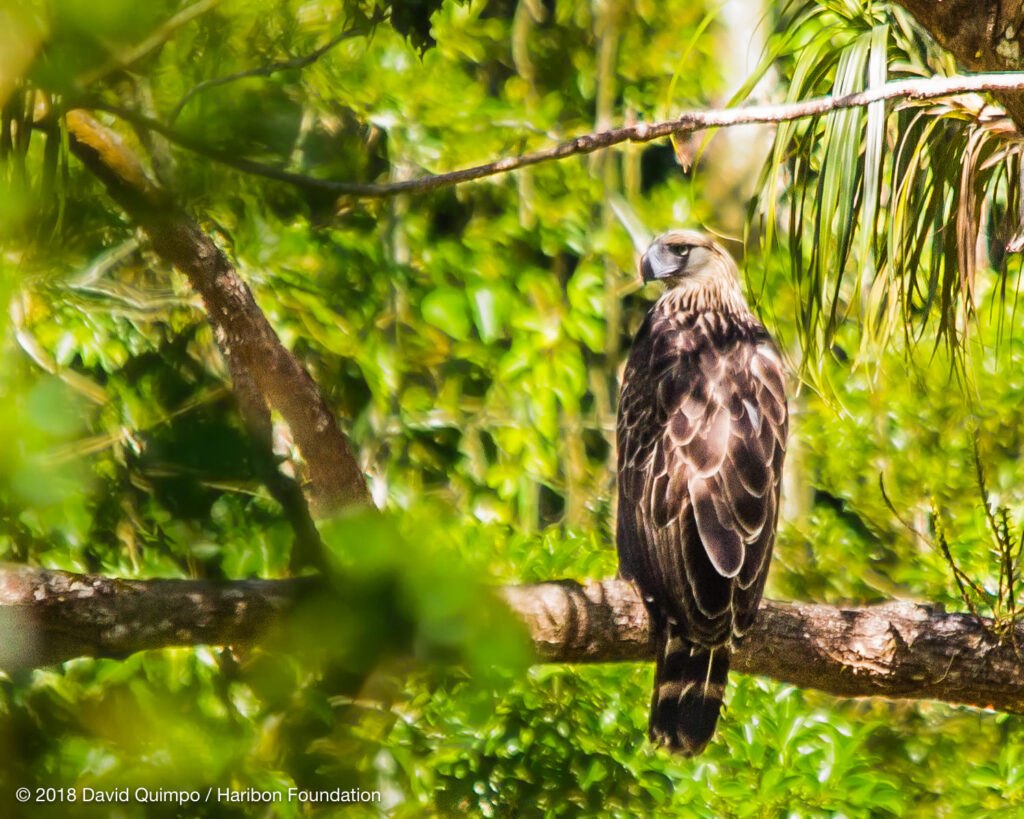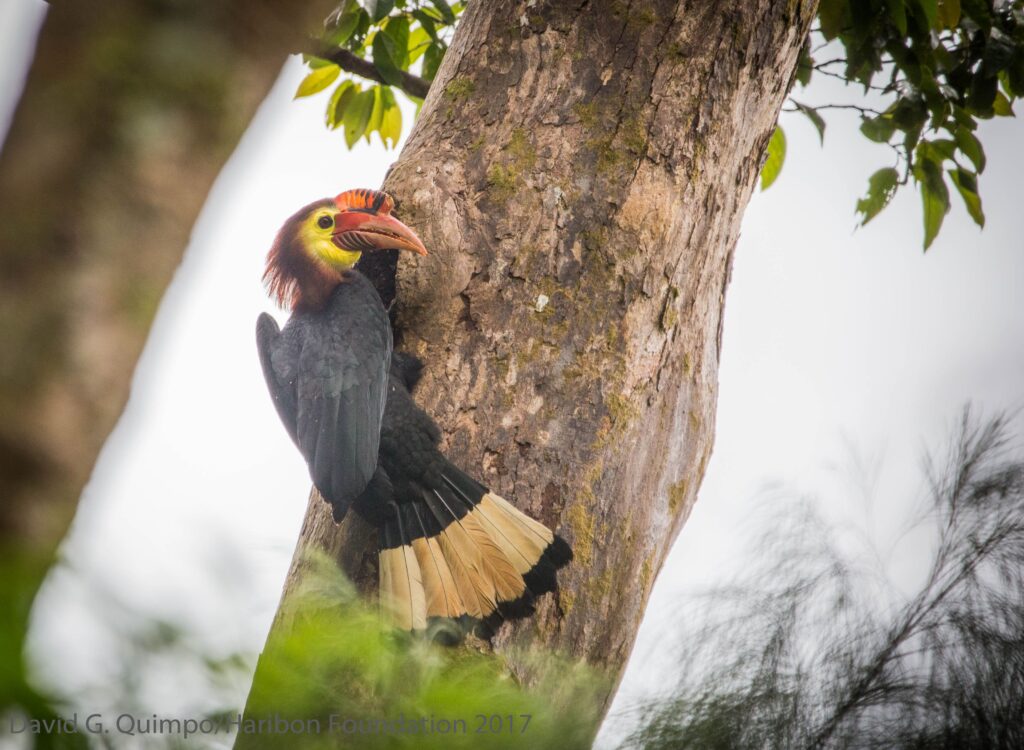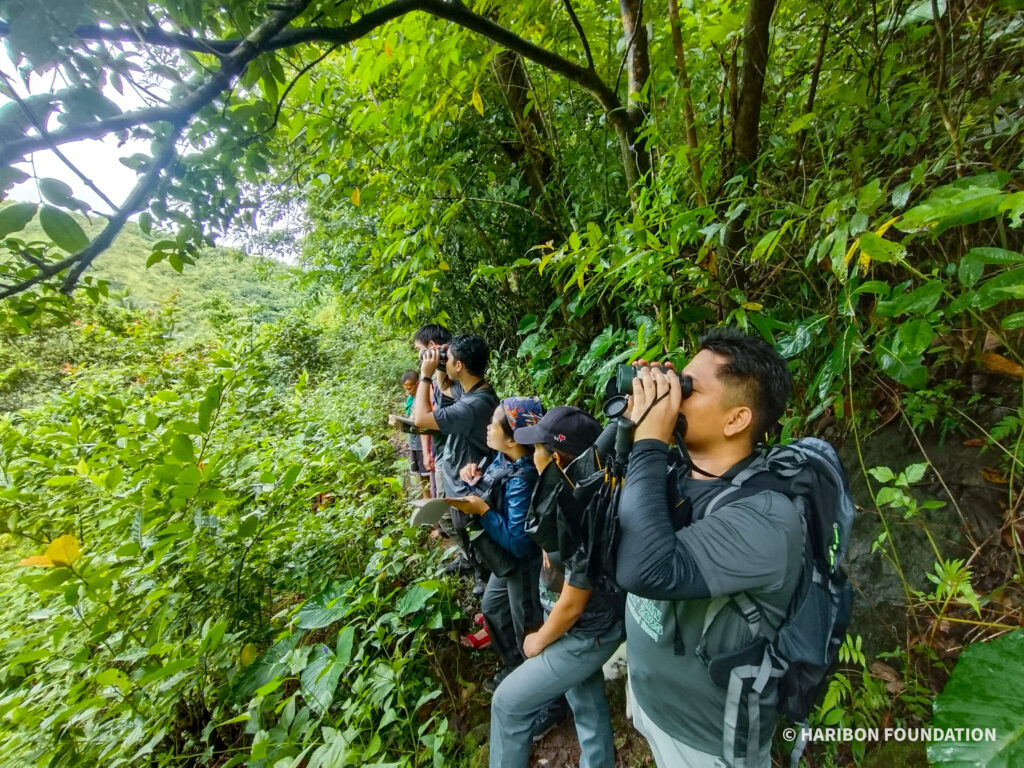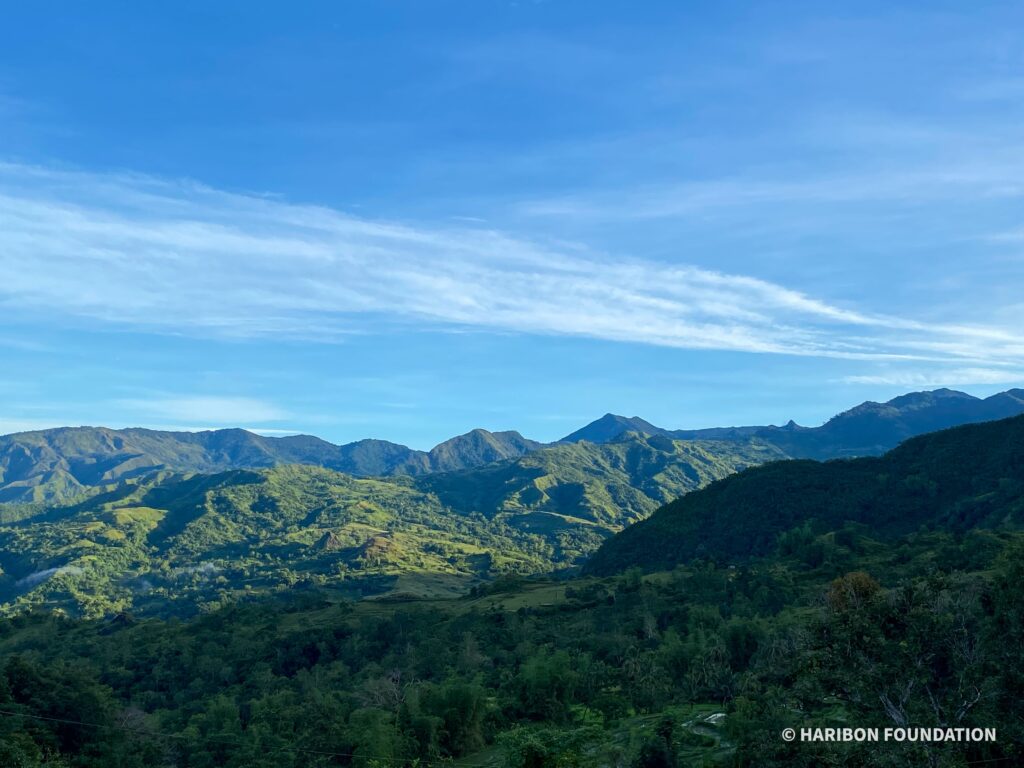As communities across the country recover from Typhoons Tino and Uwan, more Filipinos are now aware of the role of forests in protecting us from climate disasters. This is what the Haribon Foundation has advocated through five decades of science-based, community-centered conservation work that has strengthened the natural systems protecting Filipinos from storms and floods.
With only 24% forest cover remaining, the Philippines is losing its most critical natural defense against climate disasters. Healthy forests absorb rainfall, stabilize slopes, and regulate water flow—functions vital for flood control and carbon storage.
Founded in November 1972 by nature lovers inspired by the Critically Endangered Philippine Eagle, Haribon evolved from a birdwatching society into a conservation leader. The group now works across forests and marine ecosystems—guided by the principle that protecting nature means empowering the people who depend on it.

“As Typhoons Tino and Uwan remind us, forests are not just about biodiversity—they’re about survival,” said Arlie Jo B. Endonila, COO of Haribon. “This first line of defense can be sustained when communities take the lead, science informs action, and partnerships span decades.”
Shaping Philippine Conservation
During the ’80s, Haribon’s Philippine Eagle Conservation Program conducted pioneering field observations in Mindanao that documented nesting behaviors and habitat requirements. The Haribon logo then featured the Philippine Eagle, designed by the late Dr. Robert Kennedy.
As awareness grew, President Fidel V. Ramos eventually proclaimed the Philippine Eagle the National Bird in 1995, calling it “the best biological indicator of the quality of our forest ecosystems.”
By 1983, under Dr. Celso Roque, Haribon became the Haribon Foundation for the Conservation of Natural Resources, symbolized by a tree with nine leaves representing the country’s nine ecosystems. From focusing on birds, Haribon began protecting the entire web of life.

In 1987, Haribon led the “Boto para sa Inang Bayan” campaign against commercial logging in Palawan, gathering one million signatures and raising environmental awareness. In the early ’90s, a Haribon-DENR task force evaluated protected areas nationwide, laying groundwork for the National Integrated Protected Areas System (NIPAS) Act of 1992, now the backbone of protected area management.

In 1994, Haribon joined BirdLife International, linking Philippine conservation to a global network. Five years later, it published Threatened Birds of the Philippines, identifying 117 Important Biodiversity Areas.
“These milestones contribute to the protection of forests from Palawan to the Sierra Madre,” Haribon shared. “Nature-based solutions we need now more than ever.”
Global Participation and Preventing Extinction
In September, the Philippines established its IUCN National Committee, the 11th in Asia, with Haribon COO Arlie Endonila as chair. The committee, composed of nine environmental organizations, brings Philippine conservation priorities to the global stage.
Meanwhile, the Dulungan or Rufous-headed Hornbill was downlisted from Critically Endangered to Endangered on the IUCN Red List—the first status improvement in over 30 years.
Despite this, Haribon cautioned that threats to the Dulungan’s remaining habitats in Panay persist. David Quimpo, head of Haribon’s Conservation Research Department, noted that “careful considerations” must accompany downlisting one of the world’s most threatened hornbills.

The improvement coincides with 25 years of conservation in Panay by Haribon, the Philippine Biodiversity Conservation Foundation Inc., local governments, and Indigenous communities. Programs such as the Integrated Forest Conservation and Livelihood Gain Program (IFCLGP), Forests and Climate Protection Project (ForClim), and Species of Hope: Dulungan have been crucial in preventing extinction. Still, more work is needed to secure lasting recovery.
Philippine Eagle Conservation
Philippine Eagle conservation remains central to Haribon’s work. Following the 2014 rediscovery of eagles in Nueva Ecija—the first sighting in 30 years—Haribon facilitated the establishment of a 10,791-hectare Critical Habitat in the Central Sierra Madre.
A 2025 survey with the DENR, Daluhay Foundation, and the Philippine Eagle Foundation confirmed eagle presence in nearby areas. Through the Scaling Up Conservation in Central Sierra Madre Project, Haribon continues to empower Indigenous Peoples and local communities to lead forest governance in Luzon’s longest mountain range.
Both the Philippine Eagle and the Dulungan hornbill are among Haribon’s 23 priority species, many endemic to the Philippines. They inhabit two of Haribon’s 15 priority sites—Mt. Dingalan and Central Panay Mountains—critical areas shared by both wildlife and people.
20 Years of Growing Forests
In the ’90s, monocropping and exotic tree planting persisted as natural forests declined. Dr. Paciencia P. Milan of Visayas State University introduced Rainforestation Technology, which uses native species to restore ecosystems.
In 2002, Haribon adopted this approach with VSU. By 2005, the ROAD to 2020 movement was born—now the Forests for Life Movement, which has planted over 1 million native trees in 10 Key Biodiversity Areas, restoring 738 hectares with help from 30 municipalities and nearly 19,000 volunteers.
Of Haribon’s 23 priority species, eight are native trees such as White lauan (Shorea contorta) and Tangile (Shorea polysperma), both endemic and crucial nesting trees for Philippine Eagles.
Conservation by All, for All
Haribon’s work recognizes that nature serves everyone, and conservation must be inclusive. In the late ’90s, PAMANA Ka sa Pilipinas united community-led marine protected areas nationwide. The Forests for Life Movement mobilized farmers who plant forests alongside food crops.
In the last decade, Haribon’s Women in Environmental Governance program has helped women gain leadership roles in environmental management. Today, rural women continue to shape biodiversity-friendly enterprises through the WePhili Project.
Haribon also links community stewardship with national and global networks like the IUCN National Committee and BirdLife International, ensuring local voices guide policy and conservation priorities.
Looking Forward
Haribon remains committed to celebrating people as stewards of nature. Priorities include securing Protected Area designation for the Central Sierra Madre and Central Panay Mountains—watersheds vital for flood control and clean water.
Recent typhoons have shown the limits of infrastructure-only flood control, while community-protected forests continue to provide natural flood regulation and slope stability at little to no cost. The 700+ hectares of restored forest through Forests for Life, the 10,000-hectare Critical Habitat in Sierra Madre, and women-managed watersheds in Quezon are proven nature-based solutions.
New Threats to Natural Defenses
Poorly planned renewable energy projects now threaten forests that protect communities from climate disasters. Haribon cited ongoing and proposed wind projects in Rizal and Aklan, overlapping with critical watersheds and protected areas such as the Upper Marikina River Basin, Kaliwa Watershed, and Northwest Panay Peninsula Natural Park.
While supporting the transition to clean energy, Haribon warned that siting projects in forest watersheds may “release more carbon and increase climate vulnerability.” Alternatives include developing degraded lands, grasslands, industrial zones, offshore sites, and exploring distributed solar, microgrids, and agroforestry-integrated systems.
Protecting the Environment Is Protecting Ourselves
In the wake of recent typhoons and growing concern over floods, Haribon calls on all sectors to strengthen inclusive governance of natural resources.
“Everybody has a stake in the ecosystem benefits of our forests and seas,” said Endonila. “No one should be left behind.”
With continued support from volunteers, donors, organizations, and communities, Haribon aims to expand protection and restoration efforts for the next 50 years—working toward a future where forests buffer typhoons, conservation uplifts lives, and a healthy environment safeguards every Filipino.
Join the Movement
Help Haribon protect and grow forests—nature’s first line of defense—and inspire more people to take the lead for biodiversity. Learn more at haribon.org.ph or follow @goharibon on social media.




